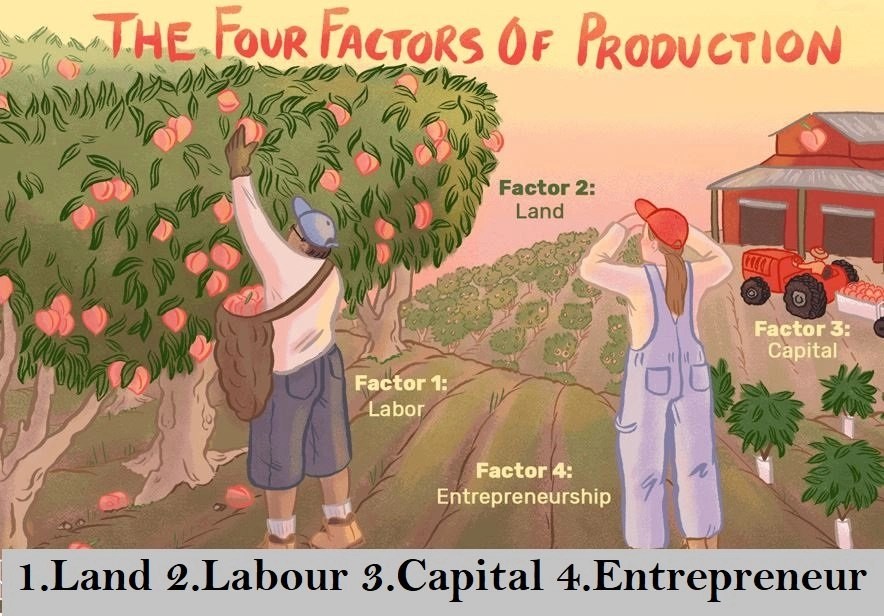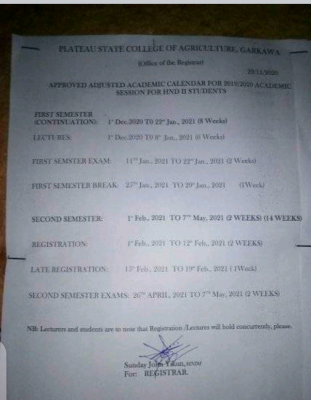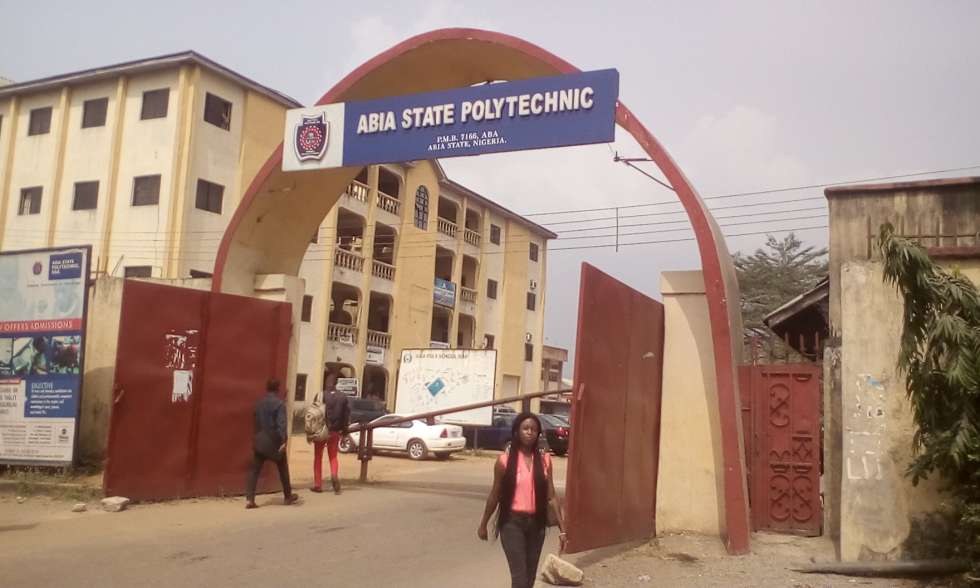
Factors of production are the human, raw, and intangible resources used in the production of goods or services, and they can also be referred to as inputs or means of production. These factors are required to create economic value and include tangible resources (natural resources, energy sources) and intangible resources (labor forces, entrepreneurship).
A firm may use factors of production to produce output. The output will, in turn, be used as an input into the creation of another good or service. For example, if a company makes cars, then raw materials like steel would be considered factors of production. The steel is used to create parts that are combined to make the car itself. This car can then act as an input into another production process, such as making car parts or car washes. Factors of production refer to all-natural and human resources used to create a good or service regardless of whether they receive compensation for their contribution.
The factors of production can be divided into two categories:
- Primary Factors: Primary factors are land, labor, capital goods, entrepreneurship/risk-bearing, and organization.
- Secondary Factors: Secondary factors include things like machinery used in making a product but within the process of making it (like the machinery used to create steel).
Factors of production are heterogeneous, which means that each factor has different characteristics. They vary in their capabilities to convert resources into goods/services. For example, raw materials have a higher conversion rate than labor forces. The Factors of production are also substitutable; this means that they can be replaced by other factors if need be without changing the output completely. Efficient allocation involves allocating factors to maximize joint production while keeping costs at a minimum. These factors are essential for economic growth and development because they provide entrepreneurs with opportunities that would not exist otherwise. There are usually four factors: land (or natural resources), labor, capital, and entrepreneurship.
Prime Movers: Land, labor, and capital.
Land:
Land is everything that exists on the planet at a particular time and in a specific place. The earth, therefore, comprises all existing land. And all that has existed or could exist in the past or future. Land includes natural resources such as rocks, minerals, soil, etc. Land includes everything from raw natural materials to houses to global positioning systems (GPS) satellites. The land also consists of the value of all other goods produced by mixing labor with land- not just food but anything made from natural materials such as wood, oil, gas, diamonds, etc. It provides man with sustenance: food, forest product, fiber, etc. The land also provides for man’s dwelling place: buildings, houses, homes. It includes all artificial aids we need in our lives, such as roads and highways, bridges, and tunnels. The land produces safety from storms or harsh climates. Land protects us from the fire of volcanoes or earthquakes and gives us serenity in its quiet beauty. It also sustains us whether we see it as soil, prairie land, hillsides, mountains, desert, or tundra.
The land has a value that can be measured regarding rent, lease, purchase price, or wages. The land is the only resource whose supply is always limited: there will never be enough land to satisfy all our needs and wants, although its value varies with location. Land even without improvements has value when built upon; Land improved by labor has an elevated value above that simply because it is at a specific location. Land may be considered as both capital (land improvement such as structures, trees, etc.) and income (rent); Land produces utility and is used as a standard of value (interest rates).
It also serves as collateral (security for the loan). Land gives job opportunities and employment. It also provides raw material and has residual value if nothing is done to it.
A land produces economic wants and money to utilize. It costs money to own; it may be bought, sold, or traded: its market price changes with demand and supply. However, land should not be confused with other natural resources such as water power, solar energy, and wind power. Water powers turbines, which produce electricity; Solar energy can be transformed into heat and electricity; The wind blows but cannot be seen nor touched – it cannot provide us with any goods or services.
Labor
Labour refers to human beings (e.g., workers) involved in production. Labor represents human effort. It includes work done by human beings, whether paid or unpaid; Land occupied by someone without permission from the owner (squatting) becomes a form of Labour. Labor involves doing something: working with something: making changes to raw materials through physical effort. Labour includes all forms of human energy, from muscular power to brainpower, resulting from natural bodily forces combined with intelligence.
Labor serves as a standard of value – wages are paid for doing work and are expressed in time. Labor should not be confused with other human efforts such as management, entrepreneurship, leadership, etc. Labour is subject to the law of diminishing returns. It always costs money – wages must be paid to labor for their efforts to produce a good or service. Labour requires raw materials to create a product. Human Labour provides job experience and skills training. Labour creates economic wants. Labour requires supervision. Labour has both residual value (if nothing is done, it will still be there doing its job) and residual income potential (namely pensions, etc.).
However, Labour should not be confused with other human efforts such as management, entrepreneurship, leadership, etc. Labour often has a value equal to the price of goods and services produced. Labor costs money because the employer must pay salary for work done to produce a product or provide a service. The workforce represents all available Labour in an economy. Work may have different meanings in different contexts;
- Work Ethic: An individual’s attitude which sees effort expended in any activity as being positive, regardless of whether tangible benefits are resulting for oneself or others;
- Work Experience: A person’s history of finding and doing work;
- Job Experience: The knowledge, skills, and abilities gained through performing specific tasks for a while.
Capital
Capital represents goods used in the production of other goods and services. Capital includes sweat of the brow (capital improvement- land improvement) and intellectual property sweat of the mind (patents). Capital represents past Labour converted into tools, machines, equipment, etc. Capital includes savings and wealth.
Medium of exchange: Money provides a common denominator for all exchanges (no bartering), making possible the buying and selling of other factors and trust in future payment. Legal tender provides job opportunities, employment, security. It provides purchasing power for goods and services.
Value: Value is worth measured in terms of money; value is determined by the demand for and supply of goods and services at a given time and place.
Price: Price is what must be paid to acquire goods or services. The price depends on the value placed upon the good or service by both buyers and sellers.
Rent: Rent is the price paid for land use, and it has nothing to do with the amount of work done or the cost incurred by landowners. Rent is determined by supply and demand. It provides an income (revenue) to landowners ) which they pay to themselves (self-employment).
Interest: Interest represents the time value of borrowing money, purchasing goods on credit, or investing in savings accounts. Interest should not be confused with other types of charges such as insurance premiums, late fees, etc.
Wages: Wages represent payment for work performed or services rendered. Unskilled labor must prove its ability first through apprenticeship training or self-employment. Wages are determined by supply and demand.
Entrepreneurship:
Entrepreneurship is the development of a new product or service. It can lead to job creation because many entrepreneurs start their businesses. Entrepreneurship is subject to diminishing returns because, eventually, all markets become saturated.
The Entrepreneur is an individual who takes financial risks, assumes responsibility for success or failure, and may receive rewards beyond immediate salary. Entrepreneurs are willing to undertake entrepreneurial activity when they see opportunities that others do not see. They are eager to take risks to reap the benefits of their efforts. The Entrepreneur has leadership, personal drive, willingness to take risks, and a desire for personal gain.
Entrepreneurs are self-employed. They use available resources efficiently to maximize wealth. Entrepreneurship involves innovation, imagination, and creativity, and it is the only economic activity that does not involve Labour, land, or capital. Entrepreneurship can lead to job creation because many entrepreneurs start their businesses. Entrepreneurs may make mistakes (some fail), but entrepreneurship should not be viewed as a risk because there are other areas where they can succeed for every mistake an entrepreneur might make. Entrepreneurial efforts produce jobs and should always be rewarded. The goal of the entrepreneur is profits for themselves and investors.
Final Words
Factors of production are the inputs used in the production of goods or services, and they are scarce resources used to create goods and services. Factors of production is a term in economics that refers to all those things needed for economic activity, from land and labor to intellectual property and money.




